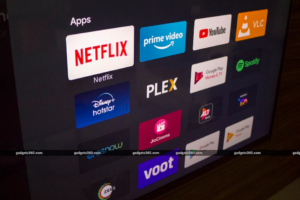The rapid spread of a global pandemic over the past year and the ensuing health and safety protocols, such as implementation of stringent curfews and lockdowns, adversely impacted numerous sectors and industries. However, the over-the-top (OTT) media sector stood out as a glaring exception to the economic ill-effects of the pandemic – with most people confined to their houses for a major chunk of 2020, OTT platforms such as Netflix, Hotstar, Amazon Prime, etc. witnessed a surge in viewership to the tune of ~3-4 million new viewers.[i] Similarly, major social media platforms, such as Facebook and Twitter, were flooded with more and more content as well.
These platforms have so far been subjected to minimal standards of content regulation and accountability. For instance, major OTT platforms in India have sought to be governed by the Code for Self-Regulation of Online Curated Content Providers, issued by the Internet and Mobile Association of India (IAMAI) on 4 September 2020. Since this code was rejected by the government in late 2020, the IAMAI, along with major OTT platforms, has also recently released an implementation toolkit which, they assert, rectifies the omissions in the earlier code pointed out by the government.[ii] However, with legal controversies involving the content published on such platforms becoming increasingly common (numerous instances of which can be found in our annual highlights for 2020), to the extent that the Supreme Court has issued notices to major OTT platforms while hearing a transfer petition filed before it by the Union of India seeking transfer of all matters relating to OTT content regulation,[iii] the self-regulation mechanism proposed by the IAMAI simply does not seem feasible.
Accordingly, the central government has set out to formulate substantive regulations governing content on social media platforms and OTT platforms. These regulations shall be titled as the Information Technology (Guidelines for Intermediaries and Digital Media Ethics Code) Rules, 2021 (the Rules), and will be promulgated by the central government pursuant to its rule-making powers under Section 87 of the Information Technology Act, 2000 (the Act).[iv] The Rules, though yet to be notified, will reportedly introduce a three-tier mechanism for regulation of media / content available online, set out a thorough process to trace the origin / first publication of such content and also confer powers to block / takedown such content upon an inter-ministerial committee.[v] Further, to enhance accountability and ensure compliance with the Rules, social media and OTT platforms will be required to appoint compliance officers,[vi] who may be held liable for blatant non-compliances. Another notable regulation under the Rules is the possible introduction of a content rating system, akin to that imposed upon traditional media bodies – ratings such as U (universal) or A (adult) may soon become commonplace on your favourite OTT platforms.[vii] The interplay between the Ministry of Information and Broadcasting (MIB) and the Ministry of Electronics and Information Technology (MEITY) in the promulgation and implementation of the Rules is another point of intrigue here – as regulation of OTT content was recently brought under the ambit of the MIB (as discussed here), although the Rules will be notified by the MEITY in accordance with its rule-making powers under the Act.
Given the voluminous content available on social media and OTT platforms, having a uniform set of standards for regulation of such content is a must. The lack of concrete regulations applicable to these platforms has caused numerous controversies and legal disputes already, which are not speedily adjudicated due to the uncertainty surrounding the rules / regulations applicable to digital media content. The grievance redressal mechanism proposed under the Rules[viii] should alleviate this problem to a great extent. However, the risk of excessive regulation of digital media content under the Rules cannot be counted out either, which would be a massive blow to the progressive shift in Indian pop-culture facilitated by OTT platforms. For now, we must await notification of the Rules before we can definitively ascertain the extent to which the government has struck a healthy balance between the need for digital media content regulation and advancement of freedom of speech and expression through online media platforms.
References:
[i]https://www.livemint.com/news/india/brands-seek-homegrown-ott-platforms-as-viewership-surges-11599990476714.html
[ii] https://www.livemint.com/opinion/columns/selfregulation-of-ott-is-it-too-little-too-late-11613610412625.html
[iii]https://www.livelaw.in/top-stories/ott-regulation-centre-seeks-transfer-of-cases-pending-in-high-courts-to-supreme-court-169723
[iv]https://www.hindustantimes.com/india-news/draft-govt-policy-seeks-3-tier-checks-for-otts-101614112169445.html
[v] Ibid.
[vi] Ibid.
[vii] Ibid.
[viii]https://www.exchange4media.com/digital-news/govt-proposes-three-tier-regulatory-framework-for-online-media-platforms-111153.html
Image source: here



















[…] of the Rules aligns with that discussed in a previous article on our blog previewing the Rules (available here), a detailed analysis of the Rules opens the door to a whole new set of questions and nuances that […]